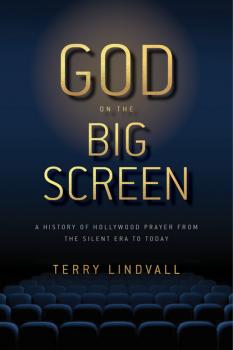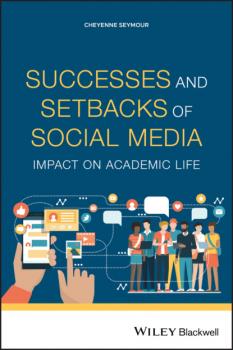Кинематограф, театр
Различные книги в жанре Кинематограф, театрGlobal TV
A reporter for the Los Angeles Times once noted that “ I Love Lucy is said to be on the air somewhere in the world 24 hours a day.” That Lucy’s madcap antics can be watched anywhere at any time is thanks to television syndication, a booming global marketplace that imports and exports TV shows. Programs from different countries are packaged, bought, and sold all over the world, under the watch of an industry that is extraordinarily lucrative for major studios and production companies.In Global TV , Denise D. Bielb and C. Lee Harrington seek to understand the machinery of this marketplace, its origins and history, its inner workings, and its product management. In so doing, they are led to explore the cultural significance of this global trade, and to ask how it is so remarkably successful despite the inherent cultural differences between shows and local audiences. How do culture-specific genres like American soap operas and Latin telenovelas so easily cross borders and adapt to new cultural surroundings? Why is The Nanny , whose gum-chewing star is from Queens, New York, a smash in Italy? Importantly, Bielby and Harrington also ask which kinds of shows fail. What is lost in translation? Considering such factors as censorship and other such state-specific policies, what are the inevitable constraints of crossing over?Highly experienced in the field, Bielby and Harrington provide a unique and richly textured look at global television through a cultural lens, one that has an undeniable and complex effect on what shows succeed and which do not on an international scale.
Cable Visions
Cable television, on the brink of a boom in the 1970s, promised audiences a new media frontier-an expansive new variety of entertainment and information choices. Music video, 24–hour news, 24-hour weather, movie channels, children's channels, home shopping, and channels targeting groups based on demographic characteristics or interests were introduced. Cable Visions looks beyond broadcasting’s mainstream, toward cable's alternatives, to critically consider the capacity of commercial media to serve the public interest. It offers an overview of the industry's history and regulatory trends, case studies of key cable newcomers aimed at niche markets (including Nickelodeon, BET, and HBO Latino), and analyses of programming forms introduced by cable TV (such as nature, cooking, sports, and history channels).
Как читать и понимать театр. Интенсивный курс
Вы когда-нибудь бывали в театре? Покатывались со смеху или в голос рыдали от эмоций, которые переполняют от просмотра спектакля? А, может, вы пробовали себя в актерском ремесле? Вы помните, какой особый запах в театральном фойе и какое настроение окутывает, как только гасят свет, просят отключить гаджеты и… поднимается занавес? А может, вы никогда не переступали театрального порога? В любом случае, мы приглашаем вас посетить одни из самых увлекательных спектаклей, послушать, о чем говорят актеры за кулисами и судачат критики.
God on the Big Screen
Film history meets church history through the ritual of prayers Moments of prayer have been represented in Hollywood movies since the silent era, appearing unexpectedly in films as diverse as Rebecca of Sunnybrook Farm , Frankenstein , Amistad , Easy Rider , Talladega Nights , and Alien 3 , as well as in religiously inspired classics such as Ben-Hur and The Ten Commandments . Here, Terry Lindvall examines how films have reflected, and sometimes sought to prescribe, ideas about how one ought to pray. He surveys the landscape of those films that employ prayer in their narratives, beginning with the silent era and moving through the uplifting and inspirational movies of the Great Depression and World War II, the cynical, anti-establishment films of the 60s and 70s, and the sci-fi and fantasy blockbusters of today. Lindvall considers how the presentation of cinematic prayer varies across race, age, and gender, and places the use of prayer in film in historical context, shedding light on the religious currents at play during those time periods. God on the Big Screen demonstrates that the way prayer is presented in film during each historical period tells us a great deal about America’s broader relationship with religion.
Men on the Screen
Cinema, whether it is understood as entertainment, business, criticism, or art, is always a reflection of the society in which it is born. Men on the Screen is a review of masculinity in cinema made in Spain by Spanish directors from 1939 to the present. The objective of this volume is, then, to observe the different types of masculinities, whose classification gives rise to a chronology that goes from the man who embodies the dream dreamt by the dictator Franco to the modern man, who is lost in his labyrinth, while also examining the repressed men, those men who have strayed and who live in the city, the rascals and braggarts, those who fight every day just to survive, the petty criminals, those men who divest themselves of the rancid national-Catholicism in order to be themselves, those who are caring, those who harass and kill their prey, the heroes, those who seduce women with their gab, corrupt politicians, those who sell their bodies, grandparents, violent and chauvinistic men, those who live in anguish for the passage of time, and even those immured by repressing and hypocritical morality. All of the masculine categories delineated above indicate that cinema is a reflection of the great changes experienced by Spanish society during these years. During this long period, Spain has gone from being a poor, isolated, dark, sad, politically and religiously depressed country to becoming a dynamic, modern country, one of the great countries of the West. And these transformations, these men, who are diverse, who are in conflict at times, and who are depressed, hopeful, hungry, consumerist, and dreamers—they are what cinema gathers. What follows next is a catalog of men who have wandered and roamed the Spanish screens.
Successes and Setbacks of Social Media
Discover the real-life impacts of social media use through a collection of fascinating academic perspectives Successes and Setbacks of Social Media: Impact on Academic Life rigorously explores the positive and negative impacts of social media as a communication tool. The book incorporates a diverse group of opinions and perspectives, all of which reflect on how social media might influence academic success, relationships, self-worth, and engagement with virtual networks. Accomplished academic and editor Dr. Cheyenne Seymour delivers an insightful examination of the different ways that social media can catapult people into success or failure. Four key areas are explored: academics, authenticity, relationships, and self-worth. Each area contains a synthesis of the latest research, supplemented with contributions that explore the negative and positive aspects of each area. The editor also includes perspectives that discuss emerging technologies, the impact they have on social media, and the impacts they might have in the future. The book offers readers a wide variety of benefits, including: An informative synthesis of peer-reviewed research about the impact of social media on individuals today Chapters that investigate both positive and negative aspects of social media across multiple demographics and usage scenarios Illuminating reports on experiences with several social media platforms, including Facebook, Instagram, and Snapchat An analysis of potential future developments and emerging technologies in social media and the coming social and ethical concerns that might arise Perfect for advanced undergraduate and graduate level students across a variety of disciplines, but particularly in courses on social media, mass communication, relational communication, and strategic communication, Successes and Setbacks of Social Media also belongs on the bookshelves of anyone with even a passing interest in the real-world impacts of social media usage.
Уйти нельзя остаться. Кризисы, выгорание, смыслы и ресурсы в кинопрофессии
Авторы книги – люди, чья жизнь тесно связана с кинематографом, поэтому дилемма, описанная словами «уйти нельзя остаться», для них и предмет профессионального интереса, и часть их собственного существования. Книга открывается 20 реальными историями, рассказанными известными и начинающими представителями творческих профессий в кино – режиссерами, сценаристами, продюсерами, редакторами, операторами, режиссерами монтажа и др. Все истории разные и весьма откровенные: о подводных камнях в кинопрофессии, тупиках и моментах отчаяния, когда опускаются руки, и о том, какие опоры позволяют пережить темное время и двигаться дальше. Опыт проживания кризисов и личные стратегии выхода из них по-своему бесценны и дают читателю возможность сделать важные для себя выводы. Вторая часть книги включает подробный анализ динамики психологических состояний человека, работающего в кино: от растерянности и восторга новичка до глубокого кризиса опытного и признанного мастера. Творческое выгорание, травмирующий опыт неудач, отсутствие признания в контексте киноиндустрии с ее спецификой – все это повод поставить точку после слова «уйти». Наконец, в третьей части авторы дают читателям те ответы, ради которых, помимо прочего, и стоит прочитать эту книгу всем, кто хочет остаться в профессии или пока только задумывается о карьере в кино или иной творческой сфере.









